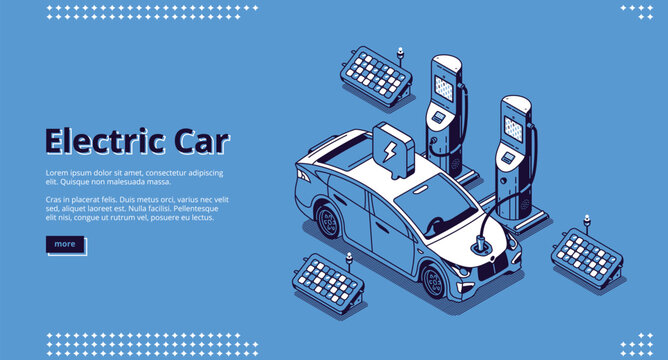The streets have become a bustling playground for a new mode of transportation that is revolutionizing the way we get around. With the rise of micromobility and ride sharing, city dwellers are finding themselves with more options than ever before. From electric scooters to shared bikes, these compact vehicles have transformed the urban landscape, offering convenience, affordability, and an eco-friendly alternative to traditional modes of transport. In this blog post, we will delve into the world of micromobility and explore how ride sharing has taken over the streets. So buckle up (or maybe just strap on your helmet), as we navigate through this exciting new era of transportation!

The Evolution of Micromobility: How Ride Sharing is Changing the Way We Navigate the Streets
The evolution of micromobility has brought about a significant shift in the way we navigate the streets, with the rise of ride sharing playing a key role. Micromobility refers to lightweight transportation options that are typically designed for short-distance trips within urban areas. Ride sharing companies have tapped into this trend by offering convenient and affordable alternatives to traditional modes of transportation.
In the past, hailing a taxi or taking public transport were common ways to get around cities. However, ride sharing platforms like Uber and Lyft have disrupted the market by providing on-demand access to electric scooters, bicycles, and even electric skateboards.
This new era of micromobility brings several advantages. Firstly, it offers an eco-friendly solution as these vehicles produce little to no emissions compared to conventional cars. Secondly, it helps alleviate traffic congestion in densely populated areas where parking is often limited. Lastly, micromobility provides users with greater flexibility and accessibility for navigating short distances without relying on their own personal vehicles.
As ride sharing continues to gain popularity worldwide, it’s clear that micromobility is here to stay. In section 2 we will delve deeper into the benefits driving this growth in ride sharing services.

Exploring the Benefits of Micromobility: Why Ride Sharing is Gaining Popularity
Micromobility, powered by ride sharing services, has been rapidly gaining popularity as a convenient and efficient mode of urban transportation. This innovative approach to mobility offers several key benefits that have contributed to its rise.
Firstly, micromobility options such as e-scooters and bicycles provide a sustainable alternative to traditional modes of transportation, reducing carbon emissions and alleviating traffic congestion in cities. By opting for these eco-friendly vehicles through ride sharing platforms, individuals can actively contribute towards creating cleaner and greener urban environments.
Secondly, micromobility offers a flexible solution for short-distance travel. With quick access to shared e-scooters or bicycles via smartphone apps, commuters can effortlessly complete trips that are too far to walk yet too short for car rides. This convenience promotes an active lifestyle while saving time on commutes.
Lastly, using ride sharing services for micromobility eliminates the need for personal vehicle ownership or relying solely on public transportation. The affordable nature of these services makes them accessible to a wider demographic range while providing enhanced accessibility within densely populated areas.
Overall, the growing popularity of micromobility through ride sharing platforms is driven by their sustainability factor, flexibility in commuting options, and cost-effectiveness. As more people recognize the multitude of advantages offered by this new form of transportation technology with seamless integration into everyday life’s routines and preferences change accordingly
A Closer Look at Micromobility Solutions: How Ride Sharing Companies are Revolutionizing Urban Transportation
Micromobility solutions have revolutionized urban transportation, offering convenient and efficient alternatives to traditional modes of getting around. Ride sharing companies like Uber and Lime have played a significant role in this transformation, providing access to a wide range of micromobility vehicles such as electric scooters and bicycles.
These ride sharing services have made it easier than ever for city dwellers to embrace sustainable mobility options. With just a few taps on their smartphones, users can locate nearby available vehicles, unlock them using the app, and enjoy a smooth ride to their destination.
One of the key advantages of these micromobility solutions is their ability to address first- and last-mile connectivity challenges. They allow commuters to seamlessly incorporate walking or public transportation with short rides on shared vehicles. This integration not only reduces congestion but also offers an eco-friendly alternative that contributes towards reducing carbon emissions.
Furthermore, these ride sharing companies are constantly innovating to improve user experience by leveraging technology advancements such as GPS tracking, smart locks, and battery notifications. These features ensure that riders can easily find available vehicles while ensuring the safety and reliability of the entire fleet.
As micromobility continues its upward trajectory, it is clear that ride sharing has become an essential component in shaping the future of urban transportation. By embracing these innovative solutions offered by ride sharing companies, we are witnessing a transformative shift towards greener cities with improved accessibility for all residents.

The Rise of Micromobility: Understanding the Impact of Ride Sharing on Urban Mobility
The rise of micromobility through ride sharing has had a significant impact on urban mobility. Cities across the globe are experiencing a revolution in transportation, as more and more people choose to embrace this convenient and eco-friendly way of getting around.
One key aspect of micromobility is its potential to reduce traffic congestion by providing alternative modes of transportation. With the increasing popularity of ride sharing, fewer cars are needed on the road, resulting in less pollution and improved air quality. This shift towards shared mobility also promotes a sense of community, fostering connections between riders who may have never crossed paths otherwise.
Furthermore, micromobility offers flexibility that traditional modes of transportation lack. Ride sharing services provide a range of options including electric scooters, bicycles, and even mopeds or electric skateboards. This variety allows individuals to select the most suitable mode for their needs while also accommodating different travel distances.
As cities continue to grapple with growing populations and limited space, incorporating micromobility into urban planning becomes increasingly important. Municipalities need to adapt infrastructure and regulations to support these new forms of transportation effectively.
In summary, the rise of micromobility through ride sharing presents an exciting opportunity for transforming how we navigate our streets. By embracing these innovative solutions, cities can benefit from reduced congestion, decreased emissions, enhanced connectivity among communities while offering flexible alternatives for commuters and residents alike.
From Scooters to Bikes: The Variety of Micromobility Options in Ride Sharing Services
Scooters: The Trendy and Convenient Micromobility Option
Scooters have become a popular choice for micromobility enthusiasts, offering a trendy and convenient way to navigate urban streets. With their compact size and electric-powered engines, scooters provide a quick and efficient mode of transportation for short distances. Riders can easily locate and unlock scooters through ride sharing apps, making them readily accessible. Additionally, scooters are eco-friendly, emitting zero emissions and reducing traffic congestion. Their versatility and maneuverability make scooters an ideal choice for navigating crowded city streets. Whether you’re commuting to work or exploring a new neighborhood, scooters offer a fun and efficient way to get around while embracing the micromobility revolution.
Bicycles: A Sustainable and Healthy Ride Sharing Choice
When it comes to micromobility options in ride sharing services, bicycles are a popular choice for many commuters. With their focus on sustainability and promoting healthier lifestyles, bicycles provide an eco-friendly way to navigate the streets while also getting some exercise.
Ride sharing companies have recognized the demand for bicycles as a viable transportation option, leading to the inclusion of bike-sharing programs within their services. This gives riders the flexibility to choose a bicycle when it suits their needs, whether it’s for commuting or simply exploring their city.
By opting for bikes in ride sharing services, users can enjoy the freedom of movement without contributing to traffic congestion or air pollution. Moreover, cycling offers numerous health benefits such as improved cardiovascular fitness and reduced stress levels.
So if you’re looking for an environmentally friendly and health-conscious way to get around town, consider choosing bicycles from your favorite ride sharing service. It’s not only good for you but also great for our planet.
Electric Skateboards: Embracing Fun and Efficiency in Micromobility
Electric skateboards have emerged as a popular option in the world of micromobility, offering a unique blend of fun and efficiency. With their sleek design and electric motors, these boards provide a thrilling ride while also being eco-friendly. They offer a convenient and compact mode of transportation, allowing riders to navigate through crowded streets and reach their destinations quickly. Electric skateboards are especially popular among urban commuters who want to avoid traffic congestion and enjoy a more active way of getting around. Their lightweight nature makes them easy to carry and store, making them an ideal choice for those who need to combine different modes of transportation during their daily commute.
Unicycles and Segways: Exploring Unique Micromobility Alternatives
In addition to scooters and bikes, ride sharing services are offering a range of unique micromobility options that cater to diverse user preferences. Unicycles have gained popularity among adventurous riders who seek a thrilling experience while zipping through the city streets. With their compact design and maneuverability, unicycles provide an exciting way to navigate urban environments.
On the other hand, Segways offer a more stable alternative for those looking for a comfortable and effortless ride. These self-balancing devices allow users to effortlessly glide around town, making them perfect for longer trips or individuals with mobility challenges.
Whether you’re searching for adrenaline-pumping fun on a unicycle or convenient transportation on a Segway, these unique micromobility alternatives add an extra layer of excitement and convenience to ride sharing services.
Navigating the Streets with Ease: How Micromobility and Ride Sharing Go Hand in Hand
Micromobility and ride sharing go hand in hand, offering commuters and city dwellers a convenient and efficient way to navigate the streets. Whether you’re zipping through traffic on a shared electric scooter or pedaling away on a bike from a nearby docking station, micromobility options provided by ride sharing companies have transformed urban transportation.
One of the keys to the success of micromobility is its seamless integration with ride sharing platforms. With just a few taps on your smartphone, you can easily locate an available scooter or bike nearby, unlock it using an app, and start your journey within minutes. This level of convenience has made micromobility extremely popular among city dwellers looking for quick and flexible transportation solutions.
Moreover, micromobility in ride sharing environments offers numerous benefits such as reducing traffic congestion, promoting eco-friendly modes of transportations, improving air quality, and enhancing overall mobility options for both residents and tourists alike.
As cities continue to grow denser and face increasing challenges related to traffic congestion and pollution, the symbiotic relationship between micromobility and ride sharing will only continue to strengthen. By embracing this innovative approach to urban transportation, we are taking steps towards creating more sustainable cities where commuting becomes effortless while enjoying all that our vibrant urban spaces have to offer.
Safety First: Tips for Riding Micromobility Vehicles in a Ride Sharing Environment
When it comes to riding micromobility vehicles in a ride sharing environment, safety should always be the top priority. Here are some important tips to keep in mind:
- Wear protective gear: Always wear a helmet and any other necessary protective gear when riding micromobility vehicles, such as knee pads or elbow guards.
- Familiarize yourself with the vehicle: Take a few moments to understand how the micromobility vehicle operates before you start your ride. Knowing where the brakes are located and how to control speed can go a long way in preventing accidents.
- Obey traffic rules: Treat the road just like any other vehicle would. Observe traffic signals, follow speed limits, and yield right-of-way when required.
- Be aware of pedestrians: Micromobility vehicles share sidewalks and paths with pedestrians, so always be mindful of their presence and give them enough space while passing by.
- Stay visible: Wear bright colored clothing or attach reflective accessories on both you and your vehicle, especially when riding at night or during low visibility conditions.
- Avoid distractions: Keep your focus on the road ahead and avoid using mobile devices or headphones that may distract you from what’s happening around you.
By following these key safety tips, riders can ensure an enjoyable experience while utilizing micromobility services within the ride sharing industry.

The Future of Urban Transportation: How Micromobility and Ride Sharing are Shaping Cities
As we look to the future of urban transportation, it is clear that micromobility and ride sharing are playing a significant role in shaping cities. These innovative solutions offer a more sustainable and efficient way to navigate urban environments.
One of the key benefits of micromobility and ride sharing is their ability to reduce traffic congestion. By utilizing smaller vehicles like electric scooters or bicycles, individuals can easily maneuver through crowded streets, avoiding the need for larger cars or public transportation. This not only helps to alleviate traffic jams but also reduces carbon emissions, contributing to a cleaner and greener city.
Furthermore, micromobility and ride sharing provide a convenient and cost-effective alternative to traditional modes of transportation. With the rise of smartphone apps, users can easily locate and unlock shared vehicles, making it effortless to hop on a scooter or bike for short trips around the city. This flexibility allows individuals to save time and money by avoiding parking fees or waiting for public transportation.
In addition to their practicality, micromobility and ride sharing also promote healthier lifestyles. By incorporating physical activity into daily commutes or leisurely rides, individuals can improve their fitness levels while enjoying the sights and sounds of their city.
As cities continue to embrace micromobility and ride sharing, we can expect to see further advancements in technology and infrastructure. From dedicated bike lanes to improved charging stations for electric vehicles, urban areas are adapting to accommodate these new modes of transportation.
In conclusion, the future of urban transportation is being shaped by the rise of micromobility and ride sharing. These innovative solutions offer numerous benefits including reduced traffic congestion, cost-effectiveness, improved health outcomes, and a more sustainable environment. As we navigate the streets with ease using these shared mobility options, our cities will continue to evolve into more vibrant and livable spaces.

Exploring the Challenges and Opportunities of Micromobility in the Ride Sharing Industry
The ride sharing industry has undoubtedly embraced micromobility as a key component of urban transportation. However, with this rapid growth comes a set of challenges and opportunities that need to be addressed.
One challenge is the issue of infrastructure. As more people turn to micromobility options like scooters and bikes, cities need to invest in dedicated lanes and parking spaces to accommodate these vehicles. This will ensure the safety of riders and pedestrians alike.
Another challenge is the issue of regulation. With the rise of ride sharing services, there is a need for clear guidelines and regulations to govern their operations. This includes issues such as licensing requirements, insurance coverage, and safety standards.
However, amidst these challenges lie opportunities for innovation and collaboration. The ride sharing industry can work closely with city officials and urban planners to develop sustainable solutions that integrate micromobility into existing transportation systems. This could involve partnerships with public transit agencies or the implementation of smart technology to improve efficiency.
In conclusion, while there are challenges to overcome in the realm of micromobility within the ride sharing industry, there are also ample opportunities for growth and improvement. By addressing infrastructure needs and working together with regulators, ride sharing companies can continue to shape the future of urban transportation in a positive way.

From Commuting to Exploring: How Micromobility and Ride Sharing Enhance Urban Lifestyles
Micromobility and ride sharing have not only transformed the way we commute, but they have also enhanced our urban lifestyles. With the convenience and flexibility of ride sharing services, people can easily switch from commuting to exploring their cities. Whether it’s a quick trip to the grocery store or a leisurely ride through a scenic park, micromobility options like scooters and bikes make it easier than ever to navigate urban environments.
One of the key benefits of micromobility in ride sharing is the ability to seamlessly integrate it into our daily routines. Instead of relying solely on traditional modes of transportation, such as cars or public transit, people can now choose to hop on a scooter or bike for short trips. This not only reduces congestion on the roads but also promotes a healthier and more active lifestyle.
Moreover, micromobility and ride sharing provide an opportunity for urban dwellers to explore their surroundings in a more intimate way. By opting for a scooter or bike instead of a car, individuals can take in the sights and sounds of their city at a slower pace, discovering hidden gems and enjoying the journey itself.
As micromobility continues to evolve and ride sharing services expand their offerings, we can expect even more innovative solutions that cater to different urban lifestyles. From electric bikes with longer battery life to shared e-scooters equipped with GPS navigation systems, these advancements will further enhance our ability to navigate and explore cities with ease.
In conclusion, micromobility and ride sharing have transformed urban transportation by providing convenient and flexible options for both commuting and exploring. As these technologies continue to advance, they will play an increasingly important role in shaping our cities and enhancing our urban lifestyles.
In conclusion, micromobility and ride sharing have emerged as powerful forces in the urban transportation landscape. As cities become more congested and people seek more sustainable and convenient ways to get around, ride sharing services that offer micromobility options have become increasingly popular. The evolution of this industry has revolutionized the way we navigate the streets, providing a variety of benefits such as reduced traffic congestion, improved air quality, and increased accessibility.
Micromobility solutions offered by ride sharing companies have transformed urban transportation by providing a wide range of options including electric scooters, bicycles, and even electric skateboards. These options cater to different preferences and needs, allowing individuals to choose the mode of transportation that best suits their journey.
The rise of micromobility has not only impacted how we commute but also how we explore our cities. With the ease of access provided by ride sharing services, people can now effortlessly navigate through busy streets and discover hidden gems in their own neighborhoods. This combination of convenience and
Questions and Answers
Q: Who uses micromobility vehicles?
A: Commuters, students, and urban dwellers utilize micromobility vehicles for short-distance travel.
Q: What are micromobility vehicles?
A: Micromobility vehicles include electric scooters, bicycles, and skateboards designed for urban transportation.
Q: How does micromobility contribute to sustainability?
A: Micromobility reduces carbon emissions, traffic congestion, and promotes eco-friendly transportation options.
Q: What are the benefits of using micromobility?
A: Micromobility offers convenience, affordability, improved health, and reduced travel time in congested areas.
Q: How can micromobility improve urban transportation?
A: Micromobility reduces the reliance on cars, eases traffic congestion, and provides efficient last-mile connectivity.
Q: Objection: Isn’t micromobility unsafe?
A: While accidents can occur, proper infrastructure, user education, and responsible riding practices can mitigate risks.